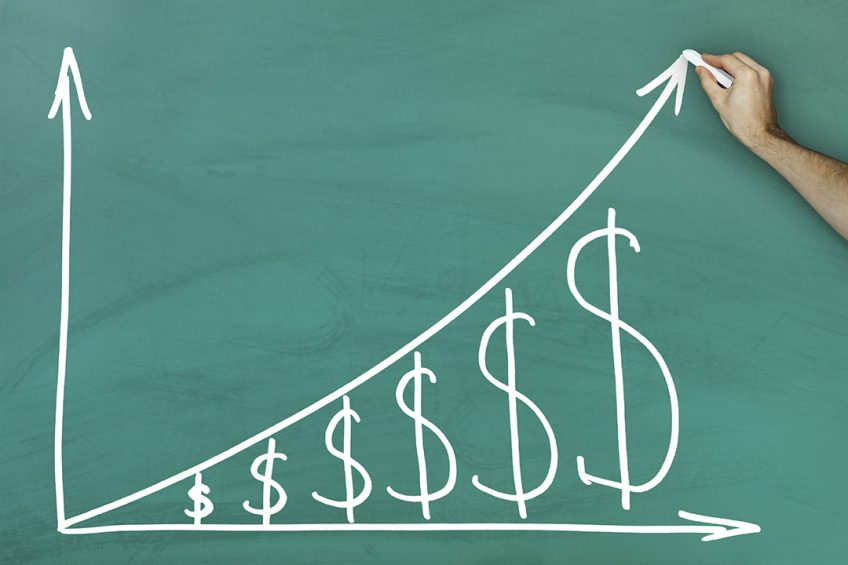Quarterly update: The global pig price cycle moves up

There has been a buzz in the pig industry for a while now because African Swine Fever has caused a shortage of pork and pigmeat in China, and this may be met by imports from abroad. Does that mean that all western pork producers will have a windfall this year and next? Pig market expert Dr John Strak puts everything in perspective.
I finished my last piece in this column (late June 2019) by saying that, “In my view, it’s likely that European and North American pig prices will move in opposite directions for the remainder of the year.”
Who are winners and losers in the pork trade?
That is how things have turned out so far. But what’s the detail behind that observation – and where next in this extraordinary year? I suggest that EU producers are the real winners this year – but 2020 could see market prospects diminish as protein substitutes fill China’s pork deficit.
Figure 1 – Global pig price cycle: Jan 2011-Sept 2019.
Figure 1 is updated to include the last 3 months’ data. As I reported in this column in April the week to week change in global pig prices began to show positive values in late March this year. That trend has continued until the end of September and we are now well into the upward phase of the global pig price cycle.
Changes have slowed in September
It’s worth noting that those week to week changes have slowed in September and this could mean that global pig prices will not rise as strongly in the last quarter of the year. This upward movement of global prices has happened despite the volatility of hog prices in the USA as the market there has swung this way and that on the news and rumours of trade negotiations with China.
Those US hog prices are higher than last year but they are not as high as some analysts expected. And they haven’t risen as strongly as Europe’s prices. Figure 2 illustrates the seasonal pattern of US hog prices which, apart from a brief hurrah in July, has followed a ‘normal’ pattern in the 3rd quarter of 2019.
Figure 2 – US daily hog prices, 2015-September 2019, $ /cwt dead weight.

The speculation that US hog producers would all be driving Cadillacs as a result of ASF in China has subsided a little in recent months although the hard numbers coming out of China over the summer have confirmed that ASF has been as bad as some epidemiologists predicted.
US pigmeat exports compared to a year ago
President Trump’s arguments over trade with China have ensured that US pork exporters have not had an ASF windfall – yet. That said, the USA’s pork exports to China have grown significantly in June and July although those rates of change will reflect the big falls in exports to China a year ago. It remains to be seen how deep Chinese consumers’ pockets are when it comes to buying pigmeat at prices that are now, literally, sky high: more about that later.
Meanwhile US hog farmers seem intent on producing more and more hogs. The latest US hogs and pigs report indicates that pig and pork supplies are above last year’s levels in 2019. The September 2019 total hog inventory is up 3% year on year and the breeding herd has expanded by 2%. The market hogs inventory is up 4%.
Hog inventory in the USA
This is the highest September 1 inventory of all hogs and pigs in the USA since estimates began in 1988. That may be OK if there is solid demand for this pork and the last few months have seen US pork exports to China recover sharply. Exports of pigmeat to mainland China are up +50% in the Jan-July period but they were down 3% the last time I reported here (June 2019). But will this turnaround continue – and is it enough?

European situation: opposite to USA
As I noted in my last column in Pig Progress, European producers have faced conditions in 2019 that are the exact opposite of those faced by US producers. Pig supplies have been tight and trade policy conditions have been favourable in the first half of 2019 for Europe (the Goldilocks scenario) and the summer of 2019 has seen more of the same. Pig slaughter numbers in the EU were down 1.1% in the 1st quarter and down 2.4% in the 2nd quarter.
These reductions were higher than the experts predicted. The short term forecast for pigmeat production in 2019 by the EU Commission is that the EU will see an increase in production of just 0.3% in 2019. Whatever the size of the herd and inventory reduction in China because of ASF European pig producers and pork exporters seem well placed to take advantage of the supply shortages in China in the 4th quarter of 2019. In the period Jan-July 2019 EU pigmeat exports are up 45% to China and are up nearly 16% in total. As a consequence, pig prices have risen strongly across the EU in 2019. Pig prices in the EU since 2010 are illustrated in Figure 3.
Figure 3 – EU pig prices (class E), Jan 2010-August 2019.

China’s ASF-linked cull and reduction in its breeding herd and inventory has resulted in a cut in the sow herd of over 30%. Even though Chinese officials have appeared to be reluctant to report the actual numbers of pigs lost (being charitable, they probably didn’t have accurate figures even for themselves) the market has signalled what is actually happening in the summer of 2019.
Figure 4 – Chinese hog price 2009-Sept 2019 (dead weight, weekly).

Prices have gone into orbit as Figure 4 shows. Clearly, that sort of rocket-like price behaviour cannot continue. Most consumers have limits on their incomes and protein substitutes are available. Indeed, Figure 5 hints that the pig price in China may have started to level off in September.
Figure 5 – Weekly Chinese dead weight hog prices, 2016-Sept 2019.

Market forces at work in China
And there are good reasons to think that market forces are at work to lubricate that move. There are several indications that major shifts are underway in Chinese consumers’ demand – away from pork and to other sources of protein: poultry, fish/aqua, eggs, sheep meat and beef. Chinese producers, small and large, are also shifting from pig to chicken and duck production.
A recent USDA report illustrates the scale of changes that may be about to occur in China. That report predicts that chicken meat production in China will increase to approximately 15.8 million tonnes in 2020 (+14%).Chicken meat consumption is forecast to increase to 15.96 million metric tonnes (MMT) in 2020, an increase of about 15% from 2019 due to shifts in consumption from pork products to poultry amid declines in pork production and rising prices.
Switch from pork to chicken meat
The switch from domestic pork products to chicken meat is/will be seen most sharply in Chinese institutional entities (educational and state facilities), hotel and restaurant institutions, and in the food processing sector. Furthermore, the USDA predicts that chicken meat imports will increase to 600,000 metric tonnes in 2020, an increase of about 20% from 2019.
It appears from the data that the EU’s pig producers and exporters can look forward to a final quarter in 2019 that has firm prices and an ongoing growth in exports. Chinese consumers are facing continuing high pigmeat prices and a change in their diets. US and North American producers and exporters are likely to see higher prices in the final quarter of 2019 as compared with 2018 but their share of the ‘Chinese bonanza’ depends on geopolitics which my crystal ball cannot compute.
Pig cycle may revert
Overall, global pig prices are set to maintain their position in the upward phase of the global pig price cycle. The Chinese situation may appear good news for western-based pork exporters but the supply response of many alternative meat and aqua-based proteins tends to be much quicker and higher than the supply response for pigmeat. This last observation suggests that 2020 could see the global pig price cycle revert to the mean. Enjoy the boom while you can.












